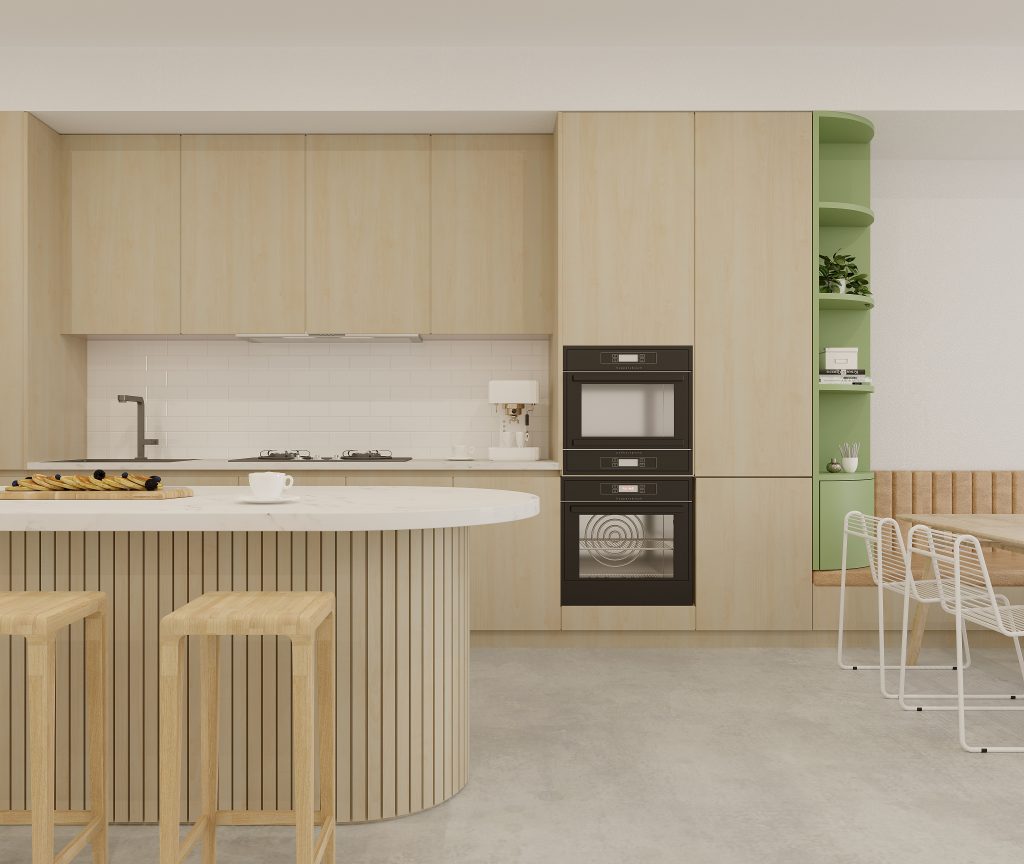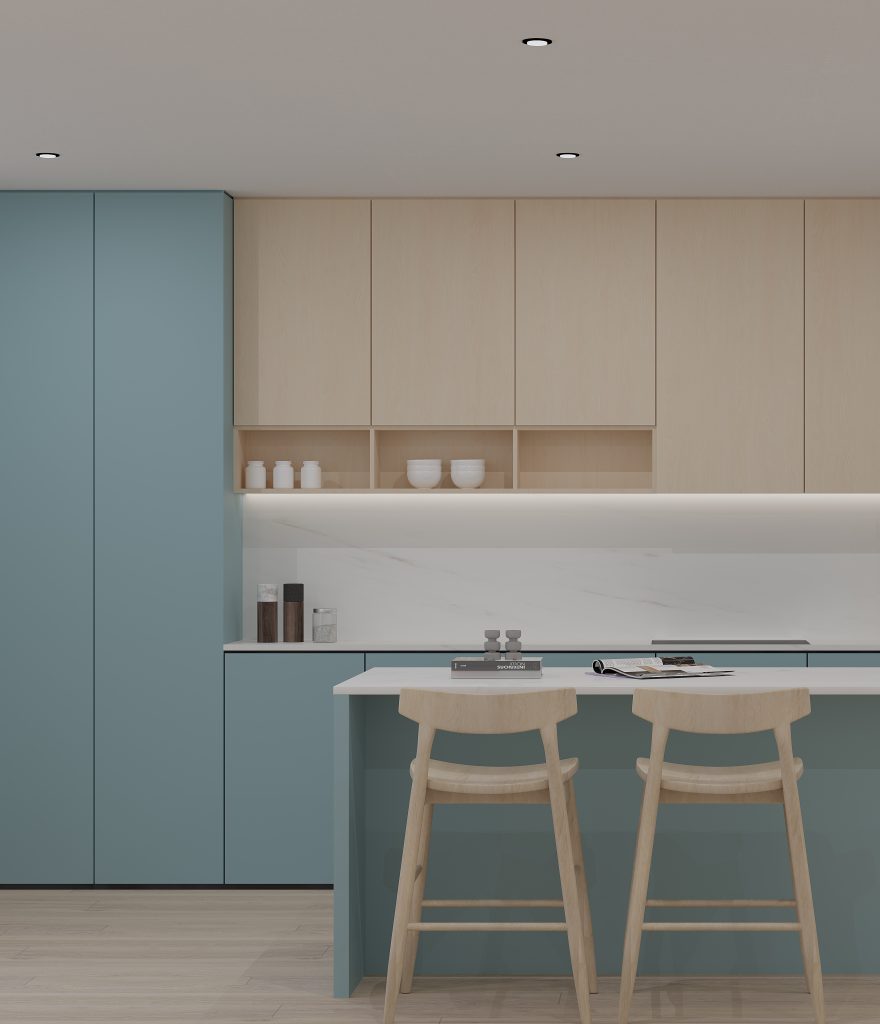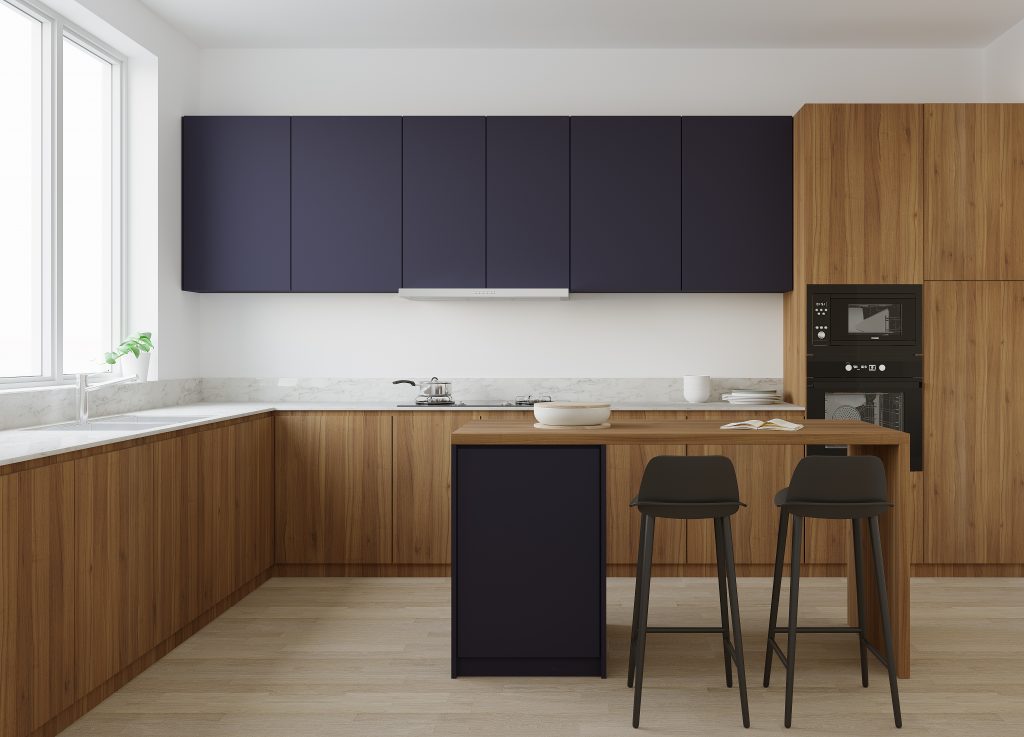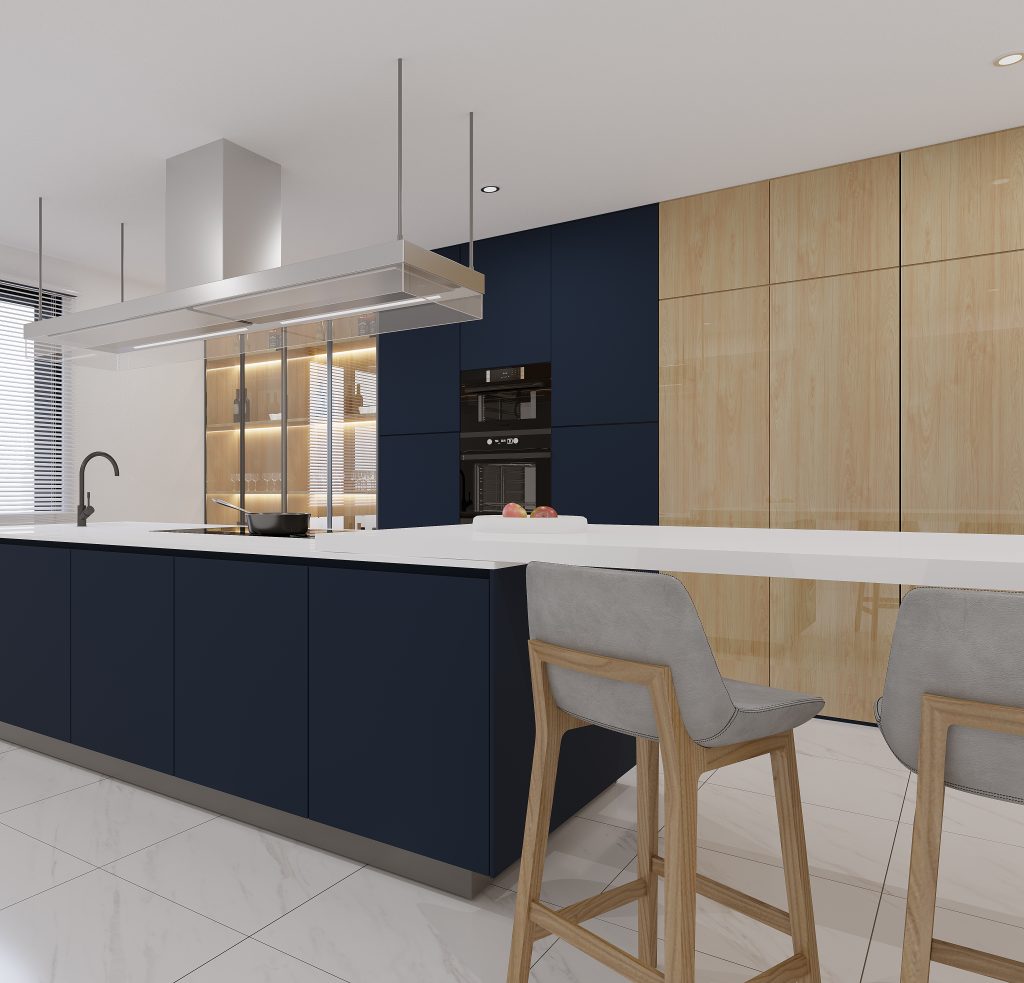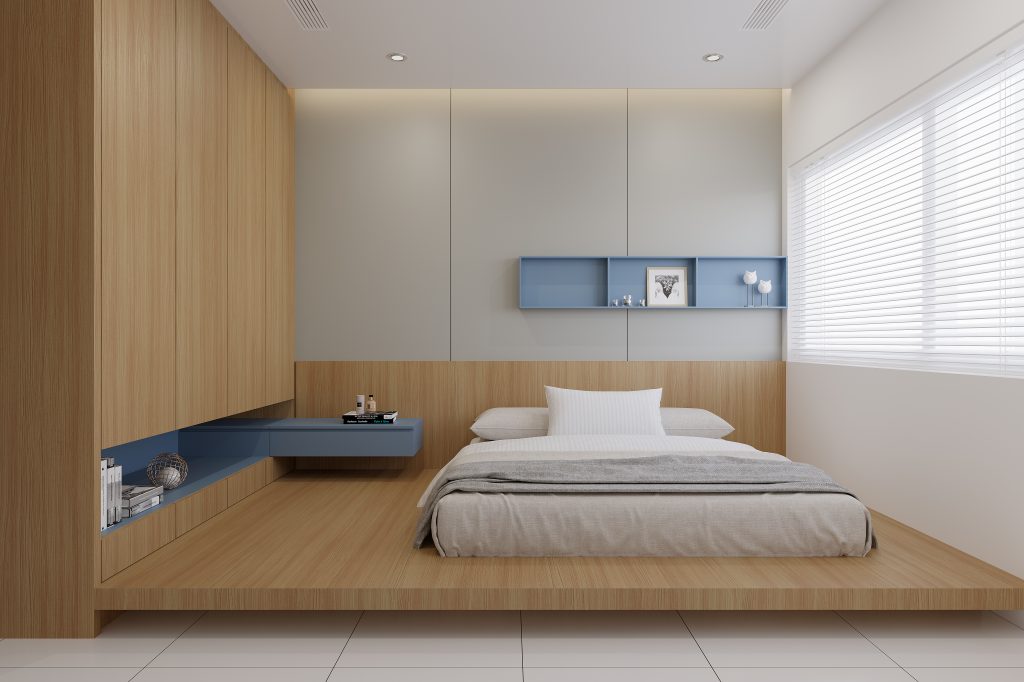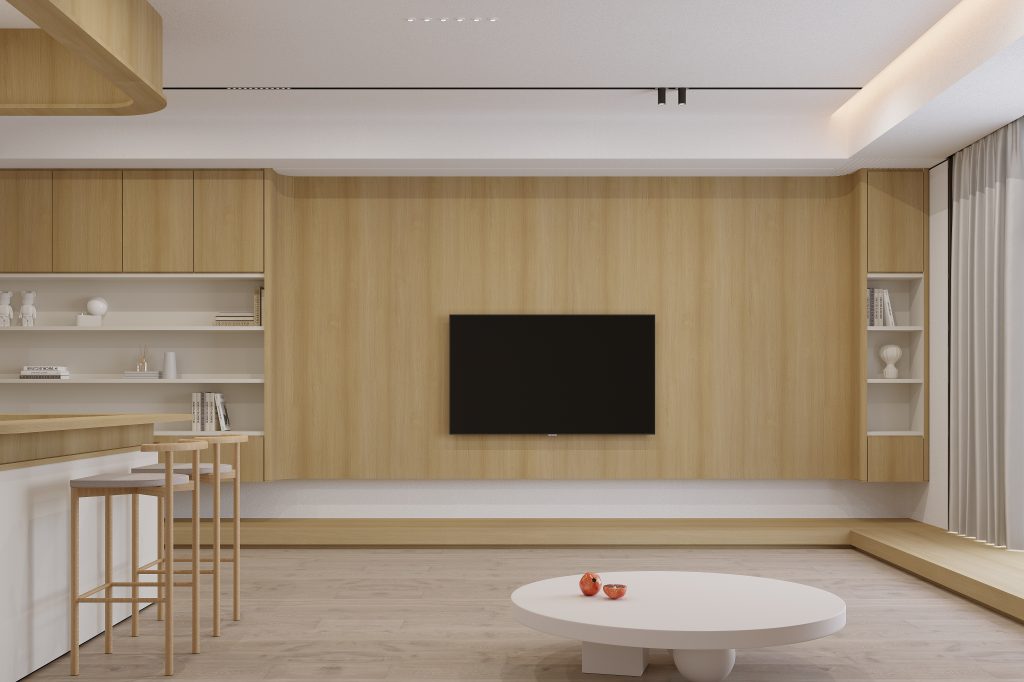How to Mix Wood Laminate Textures in Your Home Like a Designer
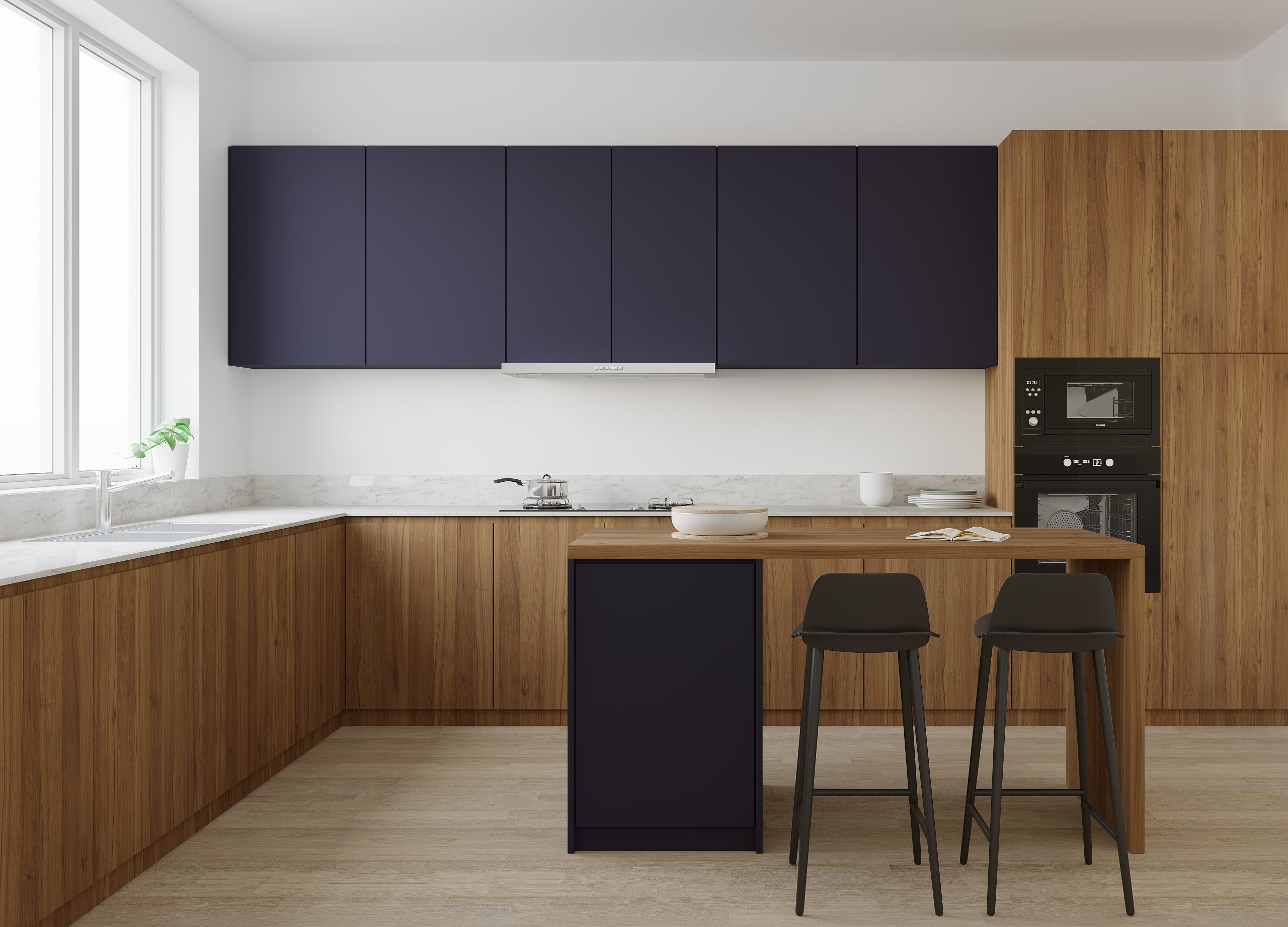
Renovating your home can feel like navigating through a labyrinth of design choices. Among the myriad decisions to make, selecting and mixing wood laminate textures stands out as a creative challenge that can dramatically influence the ambiance of your space.
Whether it’s a cozy cottage vibe or a sleek, modern look you’re aiming for, understanding how to blend these textures is key.
Here are 6 tips on how you can master the mix of wood laminate textures like a seasoned designer.
1. Pick a Primary Tone
(Featured laminates: PQ1093N [Maple] + RR7826VF [Green])
Begin by choosing a dominant wood laminate texture that will serve as the foundation for your space.
This might be a prominent grain pattern like knotted pine or a smooth, subtle maple. This primary texture will set the stage for additional textural elements you introduce.
2. Understand Texture Compatibility
(Featured laminates: PS227TH [Blue] + PJ2335SR [Maple])
Examine the fine details of your dominant texture’s pattern and feel.
Is it rough and rustic or fine and elegant? Complementary textures can either contrast these qualities or enhance them, depending on the visual dynamics you wish to achieve in your room.
3. Limit Your Textural Range
(Featured laminates: PS127TH [Blue] + PQ2540SM [Wood])
To maintain a harmonious look, limit yourself to incorporating no more than three distinct textures in your space.
This will help you avoid a chaotic mix, ensuring a polished and refined aesthetic.
Think in terms of balancing—perhaps a primary rough texture complemented by finer, more subtle textures.
4. Embrace Contrasting Textures
(Featured laminates: PK099CT [Blue] + PQ8811HG [Wood])
Don’t shy away from contrast—it’s a powerful design tool.
If your primary wood tone is light, consider a darker laminate for dramatic effect, or vice versa.
Contrasting wood laminates can delineate spaces, highlight furniture, and draw attention to architectural features. It’s a strategy that adds depth and interest to your interiors.
5. Maintain Consistency in Finish
(Featured laminates: PS102TH [Grey] + PG5879MT [Wood] + PS108TH [Blue])
Choose finishes that enhance the natural beauty of the wood textures.
Consistent finishes, whether matte, gloss, or satin, can unify diverse textures, making disparate elements feel interconnected.
This subtle unity is crucial for achieving a designer-quality look.
6. Furniture and Ceiling Beams Should Match
(Featured laminates: DB731T [Greige] + PQ6828ZL [Wood])
Finally, to anchor the room’s design, ensure that major elements like furniture and ceiling beams are in sync with your primary wood tone.
This doesn’t necessarily mean they should be identical, but they should complement each other. Matching these key components can enhance the structural harmony of your space, making it appear thoughtfully curated.
By blending these principles with the versatile and durable nature of high-pressure laminates, your home can achieve both style and functionality. Remember, the beauty of using wood laminate textures lies in their ability to transform a space with color, design, and texture.
Whether it’s on TV feature walls, kitchen cabinets, or even wardrobes, these laminates offer endless possibilities to enhance your home’s aesthetic.
Incorporate these tips into your renovation plans and watch as your home transforms into a beautifully balanced masterpiece of design, reflecting your unique style and personality.

